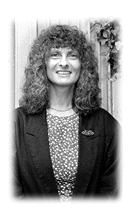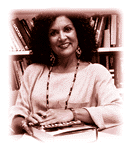Notebook - March 10, 1999
No more Nude Olympics?
Trustees endorse ban on the winter revels,
discuss alcohol initiative
What has been for almost 30 years a rite of passage
for Princeton students will almost surely come to an end. At their January
23 meeting, the trustees expressed "unanimous support" for President
Shapiro's earlier statement calling for a permanent ban on the Nude Olympics,
said W. Taylor Reveley III '65, the chairman of the Trustee Committee on
Student Life, Health, and Athletics.
The trustees also reviewed some 80 proposals from
university departments, offices, committees, and groups under an initiative
announced last spring for addressing alcohol abuse on campus.
"Everybody has to be involved" in solving
the problem of alcohol abuse, said Reveley, who believes that the key to
making this initiative work is cultural change: undergraduates have to buy
into the reality that drinking is a problem. Nothing is going to get done,
he added, "unless the students want it to change."
Shapiro and the trustees have been concerned for
years about the Nude Olympics, which, in Reveley's view, has been "spiraling
out of control." When 350 students ran naked on January 8, 10 students
became dangerously intoxicated at the event, dubbed by its critics as the
"Lewd Olympics" and "Crude Olympics" (Notebook, February
10).
In their official statement, the trustees said
they find "intolerable the serious risks that the Nude Olympics have
come to pose to our students' health, safety, and well-being, in large measure
because of the excessive and indiscriminate use of alcohol....We concur
with President Shapiro's judgment that it would be irresponsible to permit
any event of this nature to continue."
 At Shapiro's directive, Dean of Student Life Janina
Montero (pictured) is chairing a committee to develop a plan for ending
the Nude Olympics with as much student support as possible. The event "can't
be made safe -- it's too unruly," said Montero. The committee, comprising
faculty members, administrators, and students, will also determine the consequences
for any students who ignore the ban on running naked. Shapiro and the trustees
will then review the recommendations.
At Shapiro's directive, Dean of Student Life Janina
Montero (pictured) is chairing a committee to develop a plan for ending
the Nude Olympics with as much student support as possible. The event "can't
be made safe -- it's too unruly," said Montero. The committee, comprising
faculty members, administrators, and students, will also determine the consequences
for any students who ignore the ban on running naked. Shapiro and the trustees
will then review the recommendations.
Student opinion on the probable demise of the Nude
Olympics is mixed, said Spencer Merriweather '00, president of the Undergraduate
Student Government, which wants to discuss a wider range of options than
simply ending the event.
In The Daily Princetonian, students have
weighed in both for and against an end to the tradition. "I feel ashamed
of belonging to this institution," wrote Sameen Gauhar '99 on the op-ed
page. "I will be shocked if my peers defend this tradition knowing
it has risked the lives and virtues of some of their classmates." But
in the view of Patrick Malone '01, terminating the Olympics would simply
punish the majority for the errors of a few. The editors of the paper have
called for "one more chance to prove this year was merely an aberration."
ALCOHOL INITIATIVE
This month the Trustee Committee on Student Life,
Health, and Athletics will meet with student groups to continue soliciting
their ideas for curbing alcohol abuse. At the trustees' meeting in April,
the committee expects to pull together an action plan describing what various
groups on campus will do, said Reveley.
Proposals being considered by the trustees include
encouraging closer monitoring of drinking at eating clubs by their graduate
boards; urging student organizations to sponsor more alcohol-free events;
getting team captains to play more active roles in helping athletes who
abuse alcohol; and further restricting access to alcohol at Reunions.
One proposal already being implemented is a pilot
program designating specific dormitory rooms off limits to smoking or drinking.
Next year, 10 singles in Edwards Hall will be substance-free, said Montero,
and 21 rooms in Henry Hall will be smoke-free.
Dean of the Faculty Joseph H. Taylor and other
faculty members are exploring whether scheduling more Friday classes would
limit student drinking on Thursday nights.
For Princeton to see real change in alcohol use,
said Merriweather, undergraduates themselves "need to take the initiative."
The USG, he said, will organize a forum to air student ideas and will put
in writing those suggestions and others gathered from across campus.
Noting that more than 50 students nationwide die
every year from alcohol abuse, Montero said that all of higher education
faces this "intractable issue."
More extensive coverage of alcohol abuse at Princeton
will appear in the March 24 paw.
-- Kathryn Federici Greenwood
Color and opportunity
Marta Tienda examines the links between race,
poverty, fertility, and employment.
 Professor of Sociology and Public Affairs Marta
Tienda finds plenty of food for thought in the relationships between minority
status, education, fertility, poverty, and unemployment. Like many others,
she has found limitations in the data used to sort out these links. But
in her forthcoming book, Color and Opportunity: Welfare, Work and the
Urban Underclass, Tienda tries to break through those limitations to
show that when the effects of one's background and place of residence are
stripped away, race matters.
Professor of Sociology and Public Affairs Marta
Tienda finds plenty of food for thought in the relationships between minority
status, education, fertility, poverty, and unemployment. Like many others,
she has found limitations in the data used to sort out these links. But
in her forthcoming book, Color and Opportunity: Welfare, Work and the
Urban Underclass, Tienda tries to break through those limitations to
show that when the effects of one's background and place of residence are
stripped away, race matters.
Color, or minority-group status, Tienda says, "limits
economic opportunity -- that is, chances to work and earn a living wage
-- more than can be attributed to declining employment options." Tienda,
who became the director of the Office of Population Research last July,
came to Princeton in 1997 from the University of Chicago. There she studied
data from the Urban Poverty and Family Life Survey of Chicago.
An important thread through Tienda's work is the
distinction between poor people, who may or may not live among others who
are poor, and poor places, which are areas with high levels of poverty.
This comparison revealed how Chicago's poor blacks fare worse than poor
whites, poor Puerto Ricans, or poor Mexicans. Her analysis showed
that Chicago's poor blacks are very highly segregated, both from other racial
groups and from jobs. "Hispanic and other ethnically homogeneous neighborhoods
do not exhibit the extraordinary levels of joblessness and economic deprivation
that characterize Chicago's black neighborhoods," says Tienda.
Many of her findings deflate stereotypes about
the poor and their use of welfare. She challenges the argument that a disproportionate
share of welfare goes to urban ghettos. In fact, Tienda found that those
who live in urban ghettos are no more likely to use welfare or to be unemployed
than the general urban poor with similar characteristics. Contrary
to stereotypes, she found that among the jobless, black fathers were more
willing to work -- and to settle for a lower wage -- than white fathers.
WELFARE AND CHILDBEARING
Tienda also found that the use of welfare was linked
to a person's family background -- whether that person had grown up in poverty
or had had a child before marriage, for instance. At the national level,
racial and ethnic differences in welfare participation disappeared when
these factors were taken into account. But that was not true in Chicago,
the most highly segregated city in the country. Tienda found that black
and Puerto Rican women in poor neighborhoods were more likely than white
and Mexican women to use welfare.
One might assume that a "welfare culture"
has developed in certain Chicago neighborhoods, Tienda says. "But an
alternate hypothesis is that the observed inequities may also reflect ever
more limited job opportunities. Specifically, black and Puerto Rican residents
may face more formidable labor-market barriers than Mexican immigrants,
who allegedly have been crowding out native minority workers from the low-wage
market."
Having a child before marriage proved to be the
most important link to welfare use, Tienda found in research with Haya Stier
of Tel Aviv University and Renata Forste of Brigham Young. Early childbearing
has been on the rise among all racial groups, but especially among black
inner-city residents. "Because minority mothers are more likely than
white mothers to have been reared in poverty, it is difficult to disentangle
the influence on family formation patterns of poverty and minority status,"
Stier and Tienda wrote in 1997.
Again, the difference between poor people and poor
places was crucial. Stier and Tienda isolated the effects of race and place
of residence by comparing highly segregated Chicago to national urban samples.
Results showed that both race and place of residence played roles. Among
low-income white and Hispanic urban mothers, about a third had a child before
marrying; among low-income blacks, the rate was nearly 80 percent.
Thus, for nonblack mothers, poverty was the factor
that influenced the likelihood of having a child before marriage. Among
Chicago blacks, the concentration of poverty was a factor, but clearly not
the only one. "Chicago black mothers exhibit a faster rate of entry
to family life via birth than black mothers nationally, but also compared
to nonblack mothers residing in poor Chicago neighborhoods," says Tienda.
The connections between race, poverty, fertility,
and employment are just one area that interests Tienda. She is also the
author of The Hispanic Population of the United States (with Frank
Bean, 1987) and coeditor of Divided Opportunities (1988) and The
Drug Connection in U.S.-Mexican Relations (1989).
-- Mary Caffrey
A longer version of this article appeared in
the Princeton Weekly Bulletin.
GO TO
the Table of Contents of the current issue
GO TO PAW's
home page
paw@princeton.edu
 At Shapiro's directive, Dean of Student Life Janina
Montero (pictured) is chairing a committee to develop a plan for ending
the Nude Olympics with as much student support as possible. The event "can't
be made safe -- it's too unruly," said Montero. The committee, comprising
faculty members, administrators, and students, will also determine the consequences
for any students who ignore the ban on running naked. Shapiro and the trustees
will then review the recommendations.
At Shapiro's directive, Dean of Student Life Janina
Montero (pictured) is chairing a committee to develop a plan for ending
the Nude Olympics with as much student support as possible. The event "can't
be made safe -- it's too unruly," said Montero. The committee, comprising
faculty members, administrators, and students, will also determine the consequences
for any students who ignore the ban on running naked. Shapiro and the trustees
will then review the recommendations. Professor of Sociology and Public Affairs Marta
Tienda finds plenty of food for thought in the relationships between minority
status, education, fertility, poverty, and unemployment. Like many others,
she has found limitations in the data used to sort out these links. But
in her forthcoming book, Color and Opportunity: Welfare, Work and the
Urban Underclass, Tienda tries to break through those limitations to
show that when the effects of one's background and place of residence are
stripped away, race matters.
Professor of Sociology and Public Affairs Marta
Tienda finds plenty of food for thought in the relationships between minority
status, education, fertility, poverty, and unemployment. Like many others,
she has found limitations in the data used to sort out these links. But
in her forthcoming book, Color and Opportunity: Welfare, Work and the
Urban Underclass, Tienda tries to break through those limitations to
show that when the effects of one's background and place of residence are
stripped away, race matters.